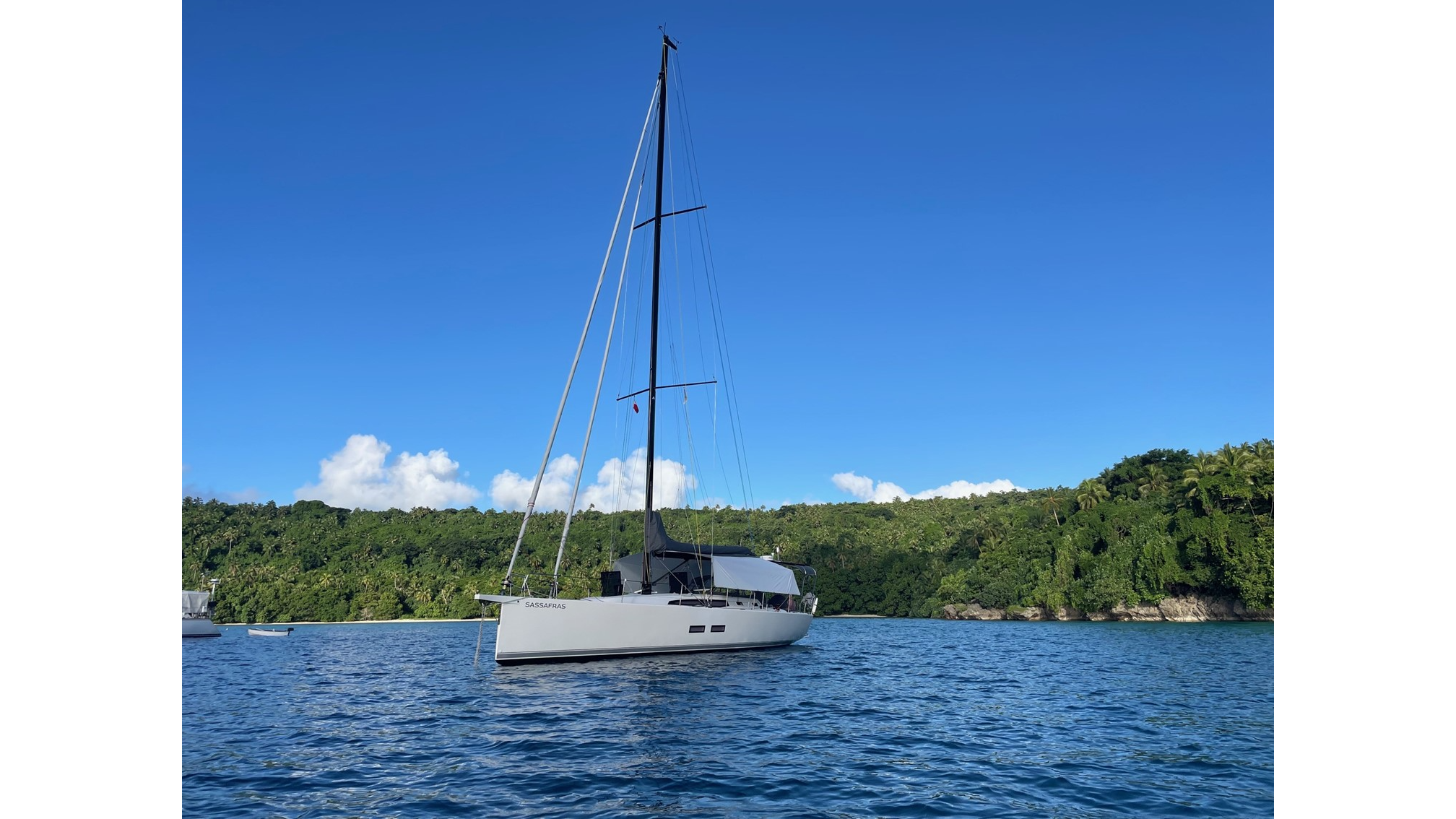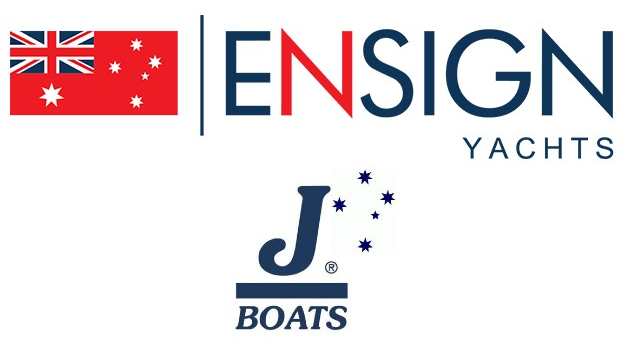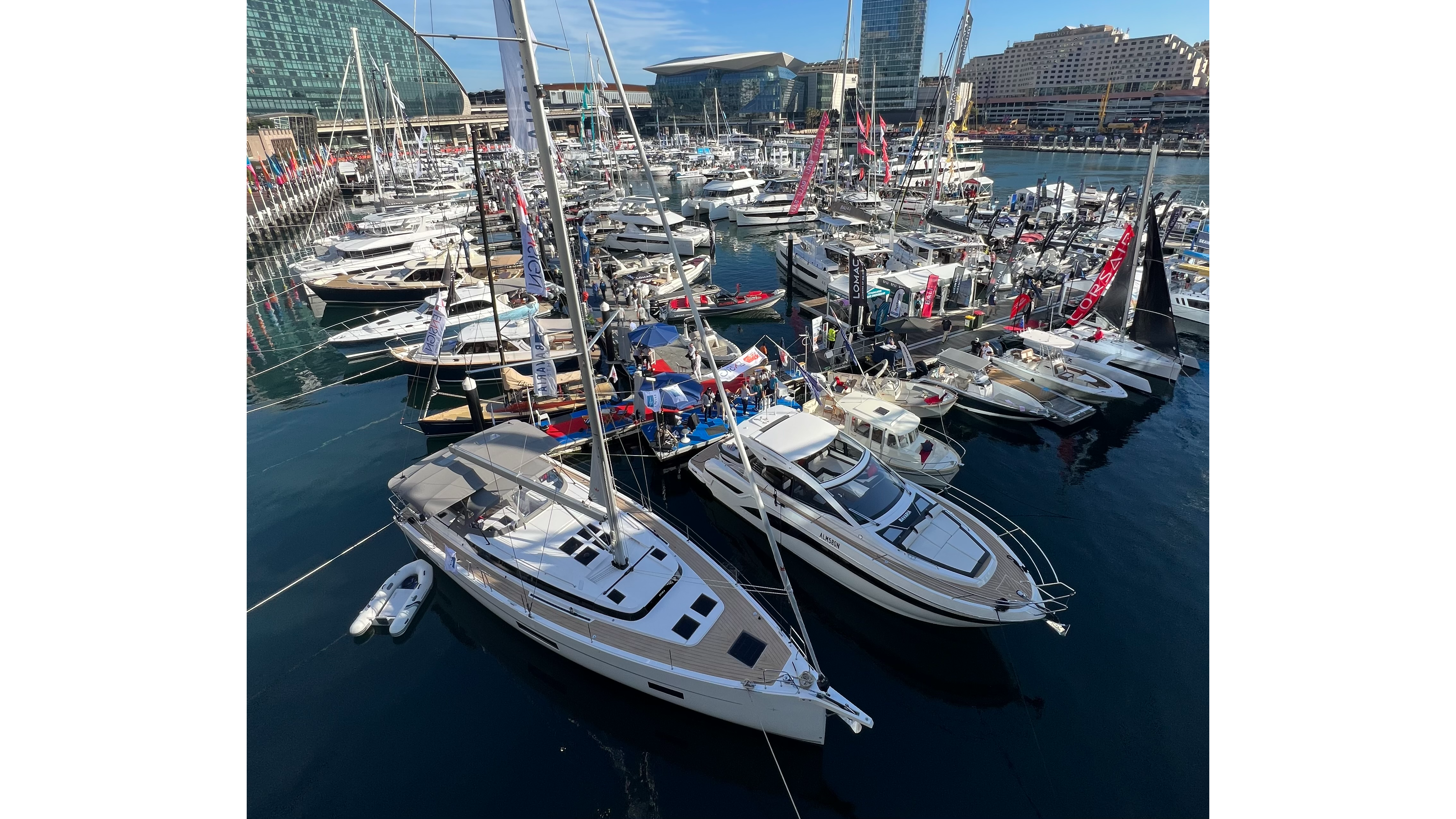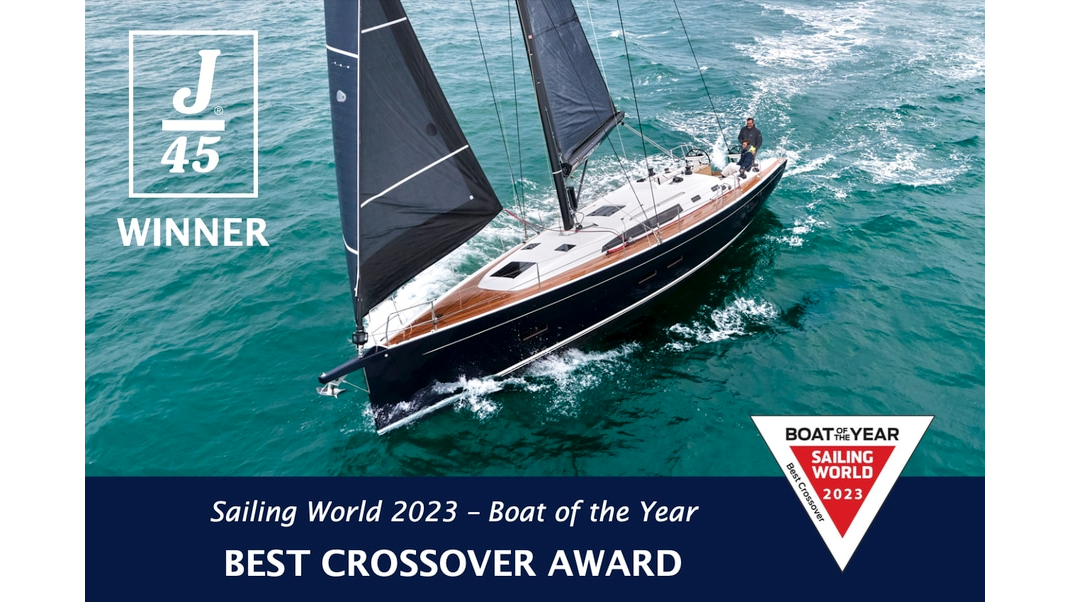The owners of J/45 'Sassafras' have very kindly shared an update on their recent cruising adventures through the Pacific.


"After waiting a week or so for a good weather window to arrive, we decided to clear customs from Neiafu, Tonga and continue our cruise to Savusavu, Fiji. The customs dock in Neiafu is very industrial and one that can be challenging to dock at without assistance. We decided to take our chances with one of us going ashore to clear and the other in control of the boat in the harbour within view of customs. Fortunately, they were busy as there are always a number of yachts wishing to clear out at the same time, so we successfully cleared out and were able to commence our passage within 24 hours. We left on passage with 12 or more other boats wishing to take advantage of the same weather window. The wind was 20kts aft of abeam and a 1-2m sea state. As the wind moved further aft during the passage, we experimented with the most comfortable ride, our main aim was to stay with the fleet of boats making the passage together and to arrive in Savusavu within working hours to clear customs. We found that the boat sat very nicely with 1 reef in the mainsail, no headsail, made good speed and was very comfortable. We arrived in Nawi Island Marina, Savusavu in the morning and were pleasantly surprised to find a state of the art marina, lush island vegetation and the town of Savusavu easily accessible for provisioning.
After a few days rest in Savusavu, we decided to head to Viani Bay, approximately 50nm east along the coast of Vanua Levu. Viani Bay is home of the Rainbow Reef. We had considered doing our PADI Open Water Diving certification here and were not disappointed. The dive school was first rate, the coral and marine life stunning and the hospitality and surroundings amazing. We were immersed in beautiful tropical waters for the week, then made our way back to Savusavu before continuing on to explore the western side of Viti Levu. The passage from Vanua Levu took us across the Koro Sea to the island of Makogai and through the Vatu-i-ra passage to the north east corner of Viti Levu. We continued across the northern side of this main island inside the reef where sailing was not possible for much of the time due to the large wind shadow created by the height of the landmass of the island. Once on the western side of Viti Levu, there are cruising grounds a plenty amongst the Mamanucas and Yasawas.
We might add at this point that considerable navigation and passage planning skills are required in Fiji to ensure safety of yourselves and the vessel. The charts are often incorrect, and there are many unmarked reefs. Our sailing in Fiji was quite conservative because of this but there was no shortage of stunning scenery, coral, fish, diving and beaches. The people are amazing and light up instantly with ‘Bula!’ We used a combination of Navionics, paper charts, OpenCPN and satellite images with a separate GPS puck for location on the image. The OpenCPN was run separately on a laptop so it was independent of the boat’s navigation equipment providing an alternate source of verification and view of position relative to hazards. The anchorages are often deep 20m plus so it’s important to have enough anchor chain and good knowledge of anchoring to avoid coral bommies and other reef hazards. We also kept to the general rule of only moving the boat between 9am and 3pm with good weather and sun so we could spot any hazards along the way.
We first anchored in sand at Malolo Island home of Musket Cove. There are several resorts on this island and its proximity to the main island makes it extremely popular. At times there must have been 70 or more boats in this anchorage. The Musket Cove resort allows cruisers to use the facilities on shore for a lifetime membership of $10FJ. The resort hosts the Musket Cove Regatta once a year.
After re-provisioning in Denarau Marina, we set off for the Yasawas. This is the most western island chain in Fiji. Stunning coral, diving and clear water, sandy beaches and resorts are features of this group. Each island is quite different and it is customary to go ashore and introduce yourself to the Chief of each island to ask permission to anchor and give a gift, this is called Sevusevu. It is often not necessary at a resort anchorage.
We set off across the bay from Nadi to Wayasewa Island. This picturesque bay is one of the quintessential spectacular sites with villages ashore, sandy beaches and soaring mountain tops providing great shelter from the prevailing trade winds. After paying our respects ashore, we hiked to the top of Wayasewa and took some spectacular photos of the bay below. Our next stop up the Yasawa island chain was Drawaqa Island. This is home to the famous Manta Ray Pass where manta rays feed usually around the time of the full moon and close to high tide. This anchorage was to become our favourite, the pass between Drawaqa and Naviti islands is a massive coral garden which extends almost the entire way between the islands. The tropical fish are so abundant that when you get in the water, schools of fish curve around you on their way along what we called the fish highways. There are a number of resorts close by so it becomes obvious when there might be manta rays in the pass because all the longboats rush out. At 0730 in the morning, we heard a number of boats going to the pass and were rewarded with the most spectacular viewing of up to 5 manta rays feeding and gliding through the water. We were to anchor at this island 2 more times during our time in the Yasawas and were lucky enough to see the mantas each time.
We continued north to Nacula Island and more spectacular coral snorkeling. From this island there are tours available to the famous Sawa-i-lau caves on the next island. We hadn’t read much about this before going and found when we got there that there would be an underwater traverse with snorkeling gear to access the inner caves. It wasn’t far, about 4m long and 2m underwater, then we popped out in the inner caves and our guides took us through to the end and told stories about the origins of the cave. This of course was a little bit challenging but worth the trip, the main attraction is the outer cave which is spectacular.

Towards the end of September, it became obvious that the weather patterns were changing. Being long term residents of Ǫueensland, we are wary of the summer weather patterns of the tropics so we decided it was time to start planning the passage home via Vanuatu. It’s a tricky decision to either go back to Brisbane from Fiji direct, via New Caledonia or via Vanuatu. We chose to break the journey in Vanuatu and then position ourselves for the most comfortable passage home departing from Luganville. The passage to Vila was approximately 3 days. We’d had a lovely exit, doing more than 100nm in 12 hours. The weather models did align but 24 hours into our passage it was obvious that something changed. We just thought, no problem, we’ll change course away from the windy weather and run a more comfortable angle. If we end up at Luganville, we can check in there instead of Vila. We decided to gybe back and continue to Vila and arrived there at approximately 1400hrs on Friday. The tricky bit was getting cleared through customs and immigration before 1600hrs when it all closes for the weekend. The official buildings are all the way across the bay in the commercial dock and we powered up our 2.5 hp dinghy to do its best the 1.5nm across the bay and then successfully completed what we termed the amazing race from building to building to get cleared in.
Vila harbour is a lot like Neiafu in Tonga, deep crystal clear water, too deep to anchor, so we took an anchor ball for 2 nights before heading off on passage to Luganville. This was relatively simple to weave between the islands of Vanuatu as we had left the complex reefs of Fiji behind. We arrived in Luganville early in the morning and anchored easily in mud near the town. We had intended to visit some of the famous blue holes on the island of Santo but an opportunity came up to leave in 1 or 2 days and get a great ride home on the trade winds.

This was our best passage yet. Our passage plan was to head out the Bougainville Strait, cross Grand Passage at the top of New Caledonia and continue on to the south of Banc De Landsdowne and south of Bellona Reefs, once through there we would have an uninterrupted 450nm final leg home to Brisbane. This is a route for the navigationally confident sailor as there are seamounts to avoid as well as taking into consideration the sea state passing through Grande Passage and south of the reef systems. The weather could not have been more ideal. We had our first 220nm day in the first half of the passage, reaching with 1 reef and a J1 at speeds of 9-11kts consistently with a 1-2m settled sea state. The boat just went like a train. The wind died off to almost nothing so motoring for 36 hours on a flat sea south of Bellona Reefs, then our wonderful trade winds came back and we continued to knock out180-200nm days with fabulous sea state. This wonderful run lasted all the way to the Fairway Beacon at Caloundra. We had an easy run into the Port of Brisbane and were secure at Rivergate by 1600hrs.
Border Force and Biosecurity were wonderful and cleared us in as much as possible at that time to allow us to step off the vessel. The final biosecurity check was done the following morning. Safe at home, we are left with wonderful memories and pictures of what was an amazing adventure.




